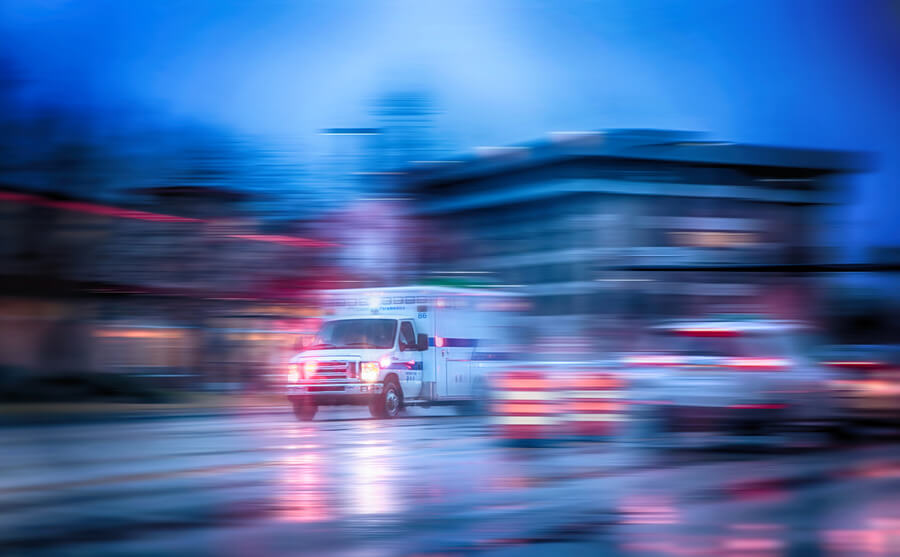As a nurse, you’re familiar with triage, the process of examining patients, assessing how urgently they need care, and determining who will get treated first. Triage procedures can vary from one facility to another. Most typically, triage aims to treat those who have the severest injuries first.
Triage is a fairly standard process in normal circumstances, but it may shift during a disaster or mass casualty incident (MCI). According to the World Health Organization, disasters are defined as when “normal conditions of existence are disrupted and the level of suffering exceeds the capacity of the hazard-affected community to respond to it.”
As a travel nurse, your job during a disaster is to be prepared to assist permanent staff and follow the instructions of administrators. You can do this best by knowing what to expect and how these changes might affect your responsibilities.
Triage: the basics
During the triage process, a nurse assigns a score or code, often color-coded, to the patient. In a typical emergency room, the patient might be seen immediately or might have to wait several hours (depending on the code that’s been assigned).
For first responders to mass casualty incidents, the two most commonly used triage protocols are SMART and SALT. These are must-knows for EMS responders, but they’re also useful for anyone who might be involved in responding to an MCI. The following are brief descriptions. (Note: these are summaries and are not a substitute for official training.)
SMART (Simple Triage and Rapid Treatment)
SMART helps responders rapidly assess victims’ ability to walk and their mental status, blood flow, and respiration. The evaluation is designed to work within 60 seconds. Based on the assessment, patients are placed in 1 of 4 color-coded categories:
- Red: severely injured patients who will receive the most care and fastest transportation.
- Yellow: stable patients who do not need to be treated or transported immediately.
- Green: patients with minor injuries, or the “walking wounded.”
- Black: victims who have been killed during the incident or are so severely injured they cannot be resuscitated with the resources available.
SALT (Sort, Assess, Lifesaving Interventions, Treatment/Transport)
SALT is a slightly different triage procedure that adjusts the principles in SMART. In SALT, responders follow four steps:
- Sort. Responders prioritize patients for individual assessment.
- Those who can walk have last priority.
- Those who cannot walk are asked to follow a command to asses their level of impairment.
- Those who are nonresponsive and may have life-threatening conditions are prioritized for interventions.
- Assess. The assessment begins with limited rapid interventions, such as controlling hemorrhaging, opening airways, chest decompression, or providing antidotes.
- Lifesaving interventions. These should only be performed if they’re within the responder’s scope of practice/experience and only if the necessary equipment is available.
- Treatment/Transport. Patients are prioritized for treatment or transport using the same color code described in SMART.
Triage in a mass casualty incident (MCI)
Triage is a life-saving process that has served hospitals well for over two centuries. But hospitals are built to expect a certain expected number of patients daily, and they work with a fairly regular flow. So what if something unexpected occurs? Here are examples of catastrophic events that may require adjustments to the typical triage process:
- natural disasters (such as hurricanes, earthquakes, fires, and floodings)
- terrorist and chemical attacks
- mass shootings
- major rail or automotive collisions, such as with buses
Here are a few recent examples of events that have severely stressed hospital capacity. Some of these events have had shocking or even almost miraculous outcomes:
- The October 2017 shooting of 58 people in Las Vegas is an example of an “ultra casualty” event. Sunrise Hospital staff worked under extreme stress, treating 199 patients in 6 hours. Patients kept coming, requiring staff to make snap decisions about how to allocate resources and support.
- In 2005, personnel at Memorial Medical Center during Hurricane Katrina had no electricity or sanitation services, was surrounded by floodwaters, and experienced temperatures of 110 degrees Fahrenheit.
- After the Boston Marathon bombings, almost all injured patients survived, and no patients who arrived at the trauma center alive subsequently died. The success was attributed to the excellent work of the healthcare workers and other responders at the scene of the attack. Also, the timing of the attack occurred at 2:50 p.m., which coincided with a shift change. This essentially doubled the amount of available staff.
In a catastrophic situation, doctors, along with nurses, may have to adapt triage procedures. Instead of focusing on treating individuals, the goal of triage becomes providing the best chances of survival for the greatest number of people. If there are many severely injured people, it may be most effective to concentrate on helping those with the highest chances of survival.
If you find yourself in the middle of an MCI as a travel nurse, work with permanent staff and/or administrators to determine the best course of action.
Mass Casualty Incident Drills
Hospitals, universities, fire departments, and other groups often participate in drills for responding to MCIs, sometimes for regulatory purposes. The drills stage a scenario (for example, 300 victims of a derailed train) and staff practice triage and treatment.
These drills allow personnel to practice how they should react in a catastrophe. They allow administrators to evaluate hospital needs (for equipment or materials). If you have an opportunity to participate in a drill (either as personnel or a staged victim), it’s a great way to prepare yourself for a real-life crisis.
The threat of a mass casualty incident or other disaster is truly scary, but if you educate yourself, you’ll feel confident about your ability to perform under pressure.
For more disaster education, check out our article on how to prepare for a hurricane as a travel nurse.
If you’d like to see more articles on Emergencies, click here.
